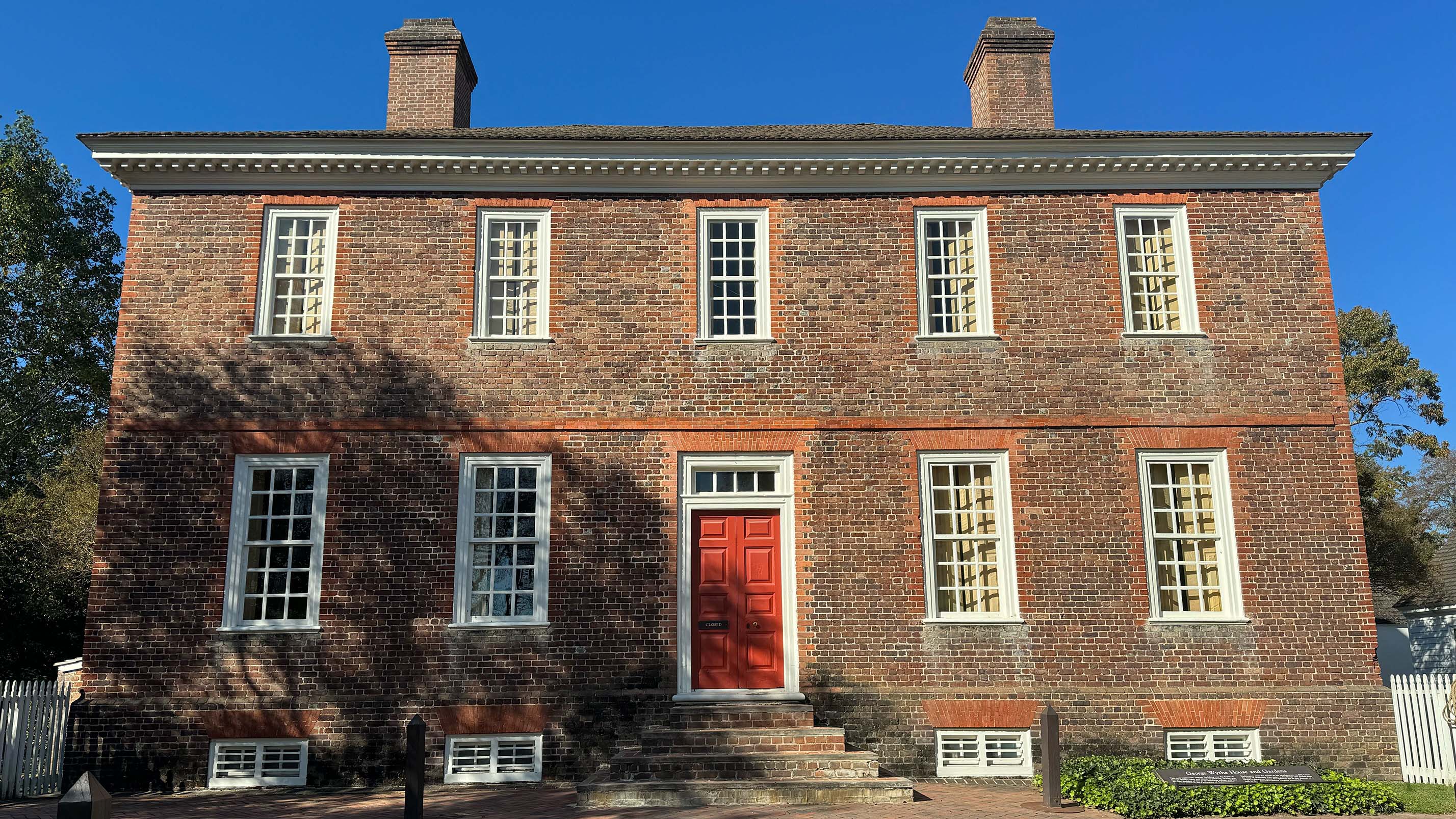
Nestled down a small, brick-lined street in Williamsburg is a two-story home with a four-step staircase that leads to a large, red front door. Two windows frame the door on either side.
It’s the home of George Wythe, the first signer of the Declaration of Independence, close associate of George Washington and Thomas Jefferson and a skilled lawyer.
“He was also, of course, a politician, Clerk of the House of Burgesses, one-time mayor of Williamsburg,” said Rachel Merkley, the site supervisor of the George Wythe House. “He also served on the board for the mental hospital. He was the Vestry Minute Bruton parish.”
George and his wife Elizabeth lived in the home until her death in 1787.
“A lot of the original components have survived,” Merkley said. “It's all original to that time period.”
The home, which was constructed in 1755, has brick walls around 14-inches thick. A majority of the home’s brick work is original. The glass, floorboards, staircase, front and back doors are all preserved from the time.
The home earned its notoriety from Wythe’s residency, but there’s also a ghoulish figure haunting its halls — Lady Ann Skipwith.
Kelly M. Brennan, a historian in the research department at Colonial Williamsburg, said it’s her story that’s created the most fervor about the house.
The story starts when Ann and her husband Peyton visit George Wythe and attend a party with him at the Governor’s palace in town. Williamsburg was Virginia’s Capitol until 1780, when it moved to Richmond.
“She finds him missing,” Brennan said. “And she searches when she finds that he's in the arms of her sister.”
The Skipwiths get into a heated argument. Ann flees down the road, tears streaming down her face, to the Wythe home.
She lost a red shoe in her rush. Servants heard a distinct stilted clanking sound as she climbed the stairs.

Local legend says Lady Ann Skipwith, a friend of George Wythe, died during a lover's quarrel with her husband, Peyton in Wythe's Williamsburg home. But fact shows Ann Skipwith actually died months later during childbirth.
It’s from this point the rumors start. The fight. The heightened emotions. The rush home. Some claim she died the next day — murdered or otherwise.
Brennan said that’s all a farce.
“She was pushed or she was hanged. Or she caught fire. Doesn’t matter. None of that’s real.”
Ann’s death in the immediate aftermath of the fight is unfounded. The pregnant Ann actually died three months later during childbirth.
The confusion surrounding the events of the party have spawned beliefs that Ann’s ghost still haunts the Wythe home. It’s become a tradition among college students and outsiders to bring a single red shoe to the home’s door, and shout:
“Lady Skipwith! Lady Skipwith! We found your shoe!”
…And await to hear her stilted gait as she answers the door.
The story has developed over the years. Brennan said she found a book dated to 1932 that retells the story with a different interpretation. Skipwith isn’t a ghost, but a calm, beautiful and affable person.
While Lady Skipwith’s story is the most popular, she’s not the only ghostly figure tied to space. 18th, 19th, 20th and even 21st century ghosts and apparitions are known to inhabit the space.
Some figures like a woman in blue colonial-era clothing have been seen and heard by many throughout the years, though no one knows who she is or how she became tied to the home.
Other spirits are more directly tied, like W.A.R. Goodwin, a 20th century minister of the Bruton Parish Church.
“He spent a lot of time in this building, because he was essential to the creation of Colonial Williamsburg,” Brennan said. “And he's been seen, mostly upstairs. And when he's seen upstairs, he's ignoring everyone. He's staring out the window, he's just sort of doing his own thing. He may not even be cognizant of the living for all we know.”
Of all the supernatural sites throughout Williamsburg, Brennan said most are convinced of the behaviors and identities of the people in this house.





